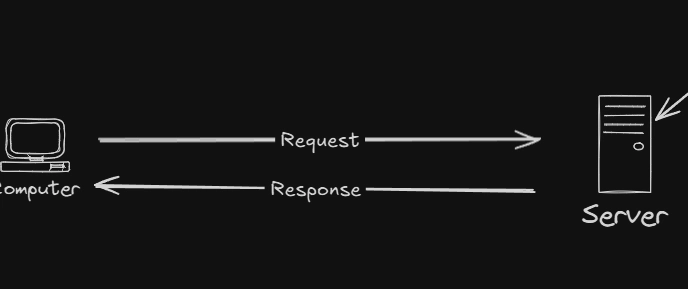What is Backend? How to Learn It
Backend is the backbone of any web application. In this article, we’ll explore:
- What is a Backend?
- Why is Backend important?
- How can you learn Backend development?
- Can we remove Backend?
- Who is a Backend Developer?
- Difference between Backend and API
📌 What Exactly is Backend?
Backend is the “hidden” part of an application that runs on the server-side. It handles the logic, data processing, and database interactions while staying invisible to users. Any application consists of two main components:
- Frontend (Runs on the user’s device)
- Backend (Runs on the server)
For example, an edtech platform’s backend handles storing courses, user authentication, and serving data dynamically. Backend typically follows the Request-Response cycle, where a client requests data, and the server responds with the requested information.
🔄 Request-Response Model
Client → [Request] → Server
Server → [Response] → Client
Some applications use WebSockets for real-time, two-way communication (e.g., chat applications like Instagram DMs).
🧑💻 Who is a Backend Developer? What is the Difference Between Backend and API?
A Backend Developer is responsible for designing and implementing the logic that powers applications. They typically work with:
✅ Programming languages (Node.js, Python, Java, etc.)
✅ Frameworks/Libraries (Express.js, Django, Spring Boot)
✅ Databases (MongoDB, MySQL, PostgreSQL)
✅ Authentication & Security
✅ API Development
💡 Backend ≠ API
While API (Application Programming Interface) is a crucial part of the backend, backend development also includes database logic, authentication, background jobs, and other essential tasks.
For example, if you run a hosting company, your backend might provide APIs for:
- User Management (CRUD operations on users)
- Order Processing (CRUD on orders)
- Server Controls (Power on/off, restart, etc.)
So, API is a part of Backend, but Backend is much more than API!
🚀 How Important is Backend? Can We Remove It?
Backend is the core of any modern application. Without it:
❌ No authentication & security
❌ No data storage or processing
❌ No business logic implementation
Some emerging Web3 technologies aim to minimize backend reliance, but even then, critical logic and data management remain necessary.
💡 Backend cannot be completely removed because exposing application logic to users would lead to security vulnerabilities and abuse.
🎯 How to Learn Backend Development
If you want to become a Backend Developer, here’s a roadmap:
1️⃣ Pick a Tech Stack (e.g., MERN - MongoDB, Express, React, Node.js)
2️⃣ Learn Databases & Authentication
3️⃣ Build projects (e.g., Hosting Dashboard, Chat App)
4️⃣ Secure your applications (e.g., JWT, OAuth, HTTPS)
🔥 Best Learning Approach
- Don’t just read theory – build projects!
- Make mistakes, debug, and improve.
- Enjoy the process rather than focusing on “end goals.”
🔚 Conclusion
- Backend is the hidden engine that powers applications.
- A Backend Developer is responsible for database management, authentication, APIs, and more.
- Backend and API are not the same – API is just a subset of Backend.
- Backend cannot be removed due to security and functionality reasons.
- The best way to learn Backend is to build real-world projects.
🚀 Ready to start your Backend journey? Drop a comment below with your thoughts!



Top comments (0)